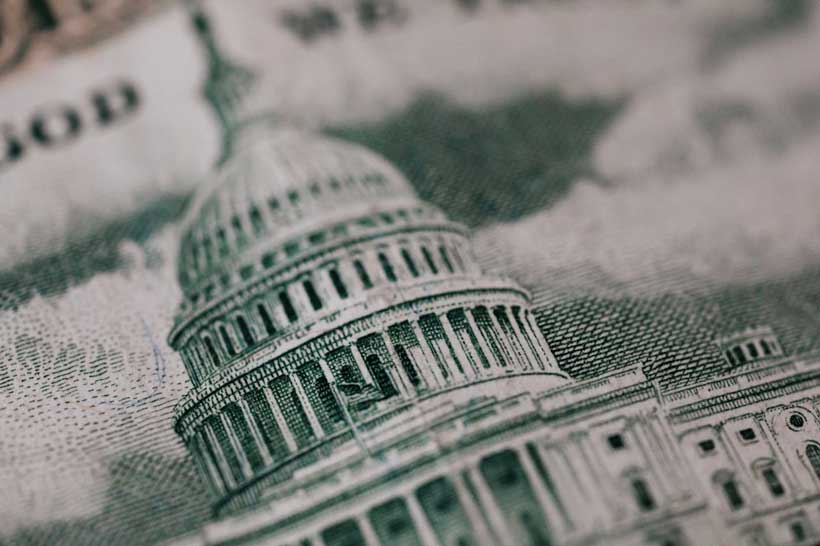
Despite the various global challenges, the US dollar has dominated international trade for many decades, and the United States has benefited more than any other country.
After the end of World War II, the US dollar became the most important currency in the world, as it is the most widely used currency in global trade, covering about 88% of business last year.
According to IMF reports, the US dollar has been the main international currency. In the second quarter of 2024, the central banks of the countries had about 58% of their reserves allocated in US dollars, with most of these cash reserves in US titles.
Near the end of World War II, 44 Allied nations gathered in Bretton Woods, USA, in July 1944. Delegates met with the purpose of discussing a new international currency that would help regain warfare, lessons to deal with future challenges and a stable financial system for global trade.
Countries agreed to convert international balances into dollars, with the dollar linked to gold at $ 35 per jaguar. Why the American dollar? Because the US was the only country practically intact after World War II, while the European economies were severely damaged and suffered a lot from war. In addition, the US held most of the world’s gold supply, and the gold -backed dollar was the most stable option at the time. As a result, countries have agreed to support the US dollar and declared it the official global reserve currency.
Although Bretton Woods system lasted until August 1971, when President Richard Nixon decided to suspend the convertibility of the gold in gold, the decision was made for two main reasons: the excessive expenditure of US dollars to finance the Vietnam War, which raised concerns about the stability of the dollar, and secondly the lack of gold reservations to support the value of the dollar.
Despite the various global challenges, the US dollar has dominated international trade for many decades, and the United States has benefited more than any other country. The world’s leading commodities, such as oil, gas and steel, are traded in US dollars. There are also domestic factors that contribute to the dominance of the dollar, including its stable value, the size of the gigantic American economy, with a turnover of over $ 27 trillion, the powerful military power and the geopolitical influence of the United States.
Since the Cold War, the United States has used the dollar and the dollar payment system as a weapon to impose economic sanctions on hostile countries or those whose actions do not align with US interests, aiming to control their behavior and actions. The US has been applying sanctions since the 1950s, initially imposing them on the Soviet Union and North Korea.
The sanction strategy continued and extended to Iran, Cuba, Venezuela, Afghanistan and Pakistan. Although sanctions were partially effective in the case of Cuba and North Korea, in most cases, as in the case of Iran and Russia, they remain widely ineffective. The US even imposed sanctions on members of the International Criminal Court (ICC) for investigating possible US war crimes in Afghanistan.
Excessive use of sanctions has reduced its effectiveness over time.
Following the conflict in Ukraine in February 2022, the US blocked Russia access to $ 300 billion in liquid currency reserves in the US and NATO countries. Although some US allies supported this, it generated concerns among other countries. It was noticed that the US could use the dollar as a weapon, even against its allies if they found that a country’s policies do not favor them.
After observing such unilateral decisions from the United States, European countries realized the importance of creating an EU -based system that was independent of Swift and the US Payment System, and that did not involve dollars payments. In 2023, French President Emmanuel Macron tried to draw attention to the fact that Europe needs to reduce its dollar dependence to protect itself from “American vassals.”
The broad use of the US dollar in the imposition of sanctions has led other nations to seek alternative currencies for bilateral trade.
For example, according to a Global Times report, China and Russia have made a bilateral trade of over $ 240 billion, with 90% of this trade in Yuan Chinese. Despite the severe sanctions imposed on Russia, countries such as India, Saudi Arabia, United Arab Emirates and Türkiye continue to negotiate with Russia using different dollar coins.
BRICS, a rapidly growing economic block led by China and Russia, was created in 2009 with the aim of combating Western dominance over international institutions and failed to sincerely serve developing nations.
Since 2022, Russia has led promotion and support for the idea of an international BRICS currency. The plan for a BRICS coin was also discussed at the BRICS summit in August 2023, under the suggested name “R5”.
Currently, BRICS has fourteen members representing a quarter of the global economy and almost half of the world’s population.
According to JP Morgan’s view of dedolarization, “dollar diversification is a growing tendency. However, they emphasize that the factors that support the dollar remain deeply rooted and structural. The role of the dollar in global finances, their economic and financial system for the liquidity of the dollar and institutional transparency indicates that any significant erosion of the dollar will probably lead to domain. decades. ”
In this context, Pakistan also faces challenges and opportunities for decalarization. Here comes a fundamental question: is decalarization a viable strategy for Pakistan?
A large part of Pakistan’s currency reservations are in US dollars, which are used to manage the balance of payments. In addition, 86% of Pakistan trade is called in US dollars, and trade called in euros represents less than 10%.
The strong dependence on the Pakistan of the US dollar caused serious economic challenges, as the country has lost almost 150% of its currency since 2018, leading the country to almost hyperinflation and had its import capacity reduced to the 2022-23 crisis.
For Pakistan, a possible strategy can be to reduce the excessive dependence of the US dollar and diversify its currency options in commercial mechanisms. For example, using Chinese Yuan and Russian rubl can reduce overwhelming dependence on Pakistan from the US dollar.
In June 2023, Pakistan bought Russian oil in Yuans, marking a major change in its traditional practice of buying oil in US dollars.
Although Pakistan has the potential and ability to get benefits from the evolution of global dynamics, due to its strategic alignment with China, this should not disturb its largest country economically, the United States.
Originally published by Modern Diplomacy
By Ali Hamza
Source: https://www.ocafezinho.com/2025/04/26/armamentizacao-do-dolar-a-tendencia-crescente-em-direcao-a-desdolarizacao/

